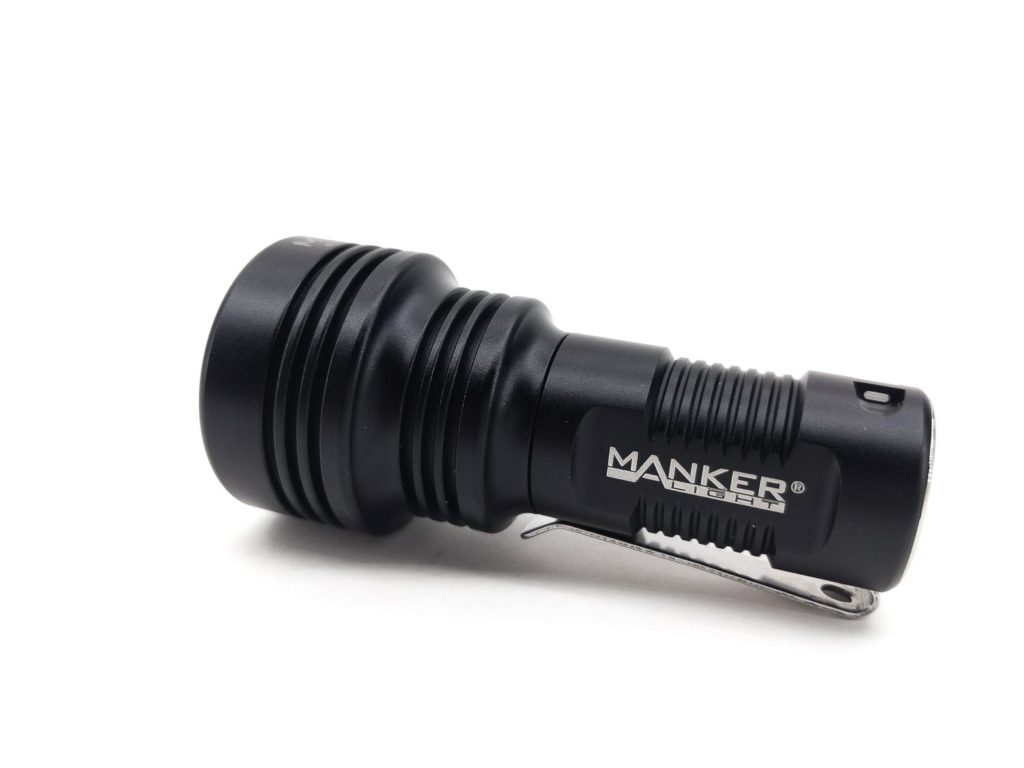Manker MC13 review
| Brand / Model | Manker MC13 |
|---|---|
| LED | OSRAM KW CULNM1.TG |
| Lumens | 950 lm |
| Beam intensity | 144 kcd |
| Battery config. | 1*18650 |
| Material | Aluminum |
| Modes | 9 |
| Blinkies | Multi |
| Reflector | TIR optics |
| Waterproof | IPX8 |
| Review date | August 2020 |
Introduction:
Note, the Manker MC13 has been replaced by the Manker MC13 II
I’ve been a member of BudgetLightForum (“BLF”) for 4+ years now. During this time, Manker seemed to have faded out of discussions for one reason or another (that will not be discussed here). To the point that I hadn’t heard much about Manker in a long time. So I was quite surprised when all of a sudden several threads popped up with excitement regarding a few new Manker products. Is it time for Manker to step back into the spotlight? Have they produced a new generation of flashlights that will garner the attention of demanding lighting enthusiasts? Read on to find out!
What you’ll get:
The Manker MC13 arrived in a rather plain-looking cardboard box with a label adhered to the front to specify the contents of the package. Upon opening the box, I was greeted immediately with the pleasant looking MC13 surrounded in dense black foam. Stuck underneath the MC13 was a bag with a short USB-C to USB-A cable, spare o-ring, and a Manker-branded strap. Oh, and there was also a nice manual that, like any good man, I tossed aside quickly. Stuck inside the Manker MC13 was a USB-C rechargeable 1100 mAh 18350 battery. So to recap, inside the box was:
- Manker MC13 flashlight
- Manker-branded, protected, USB-C rechargeable 18350 battery
- short USB-C to USB-A charging cable
- Manker-branded wrist strap
- spare o-ring
- user manual
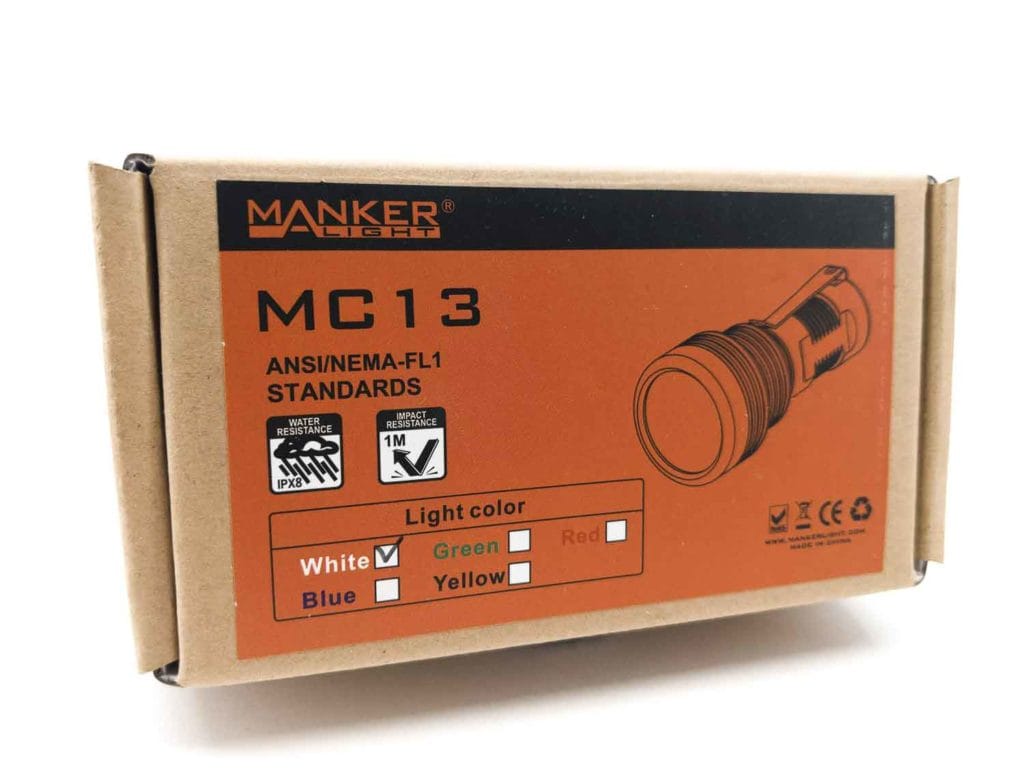
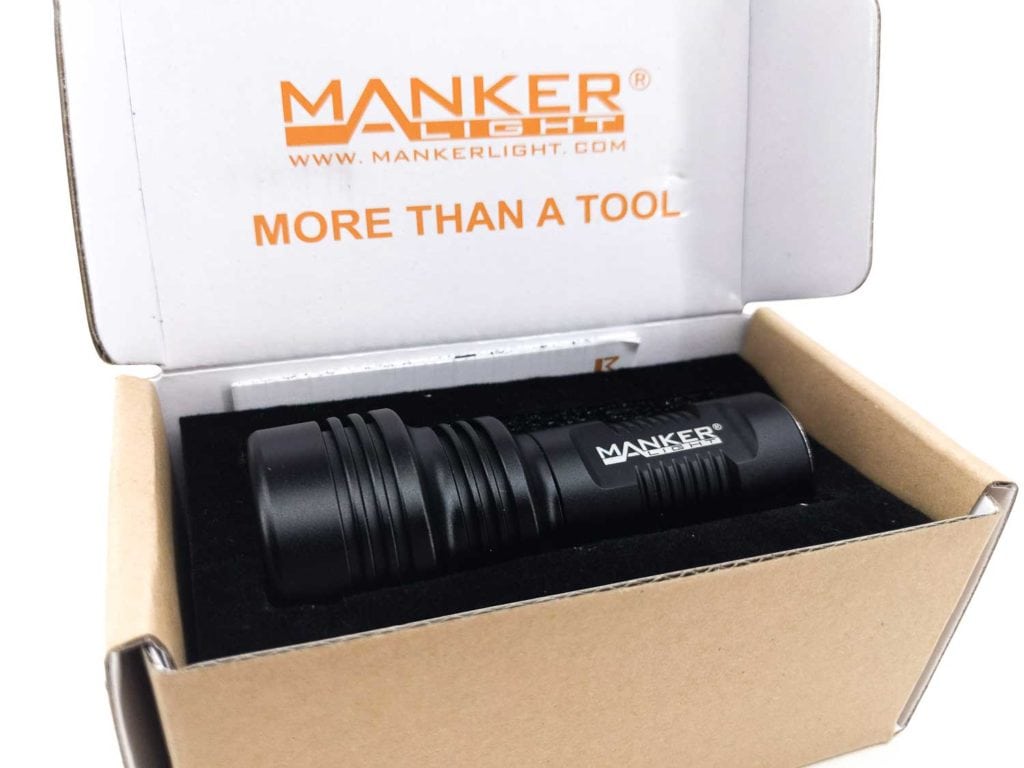
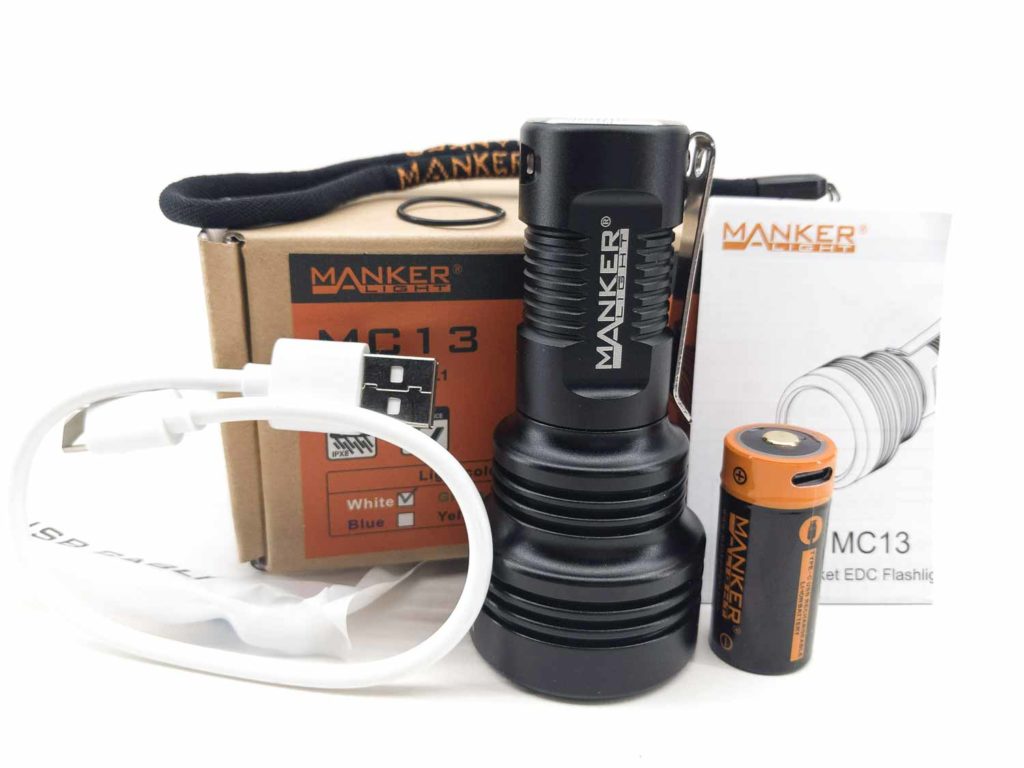
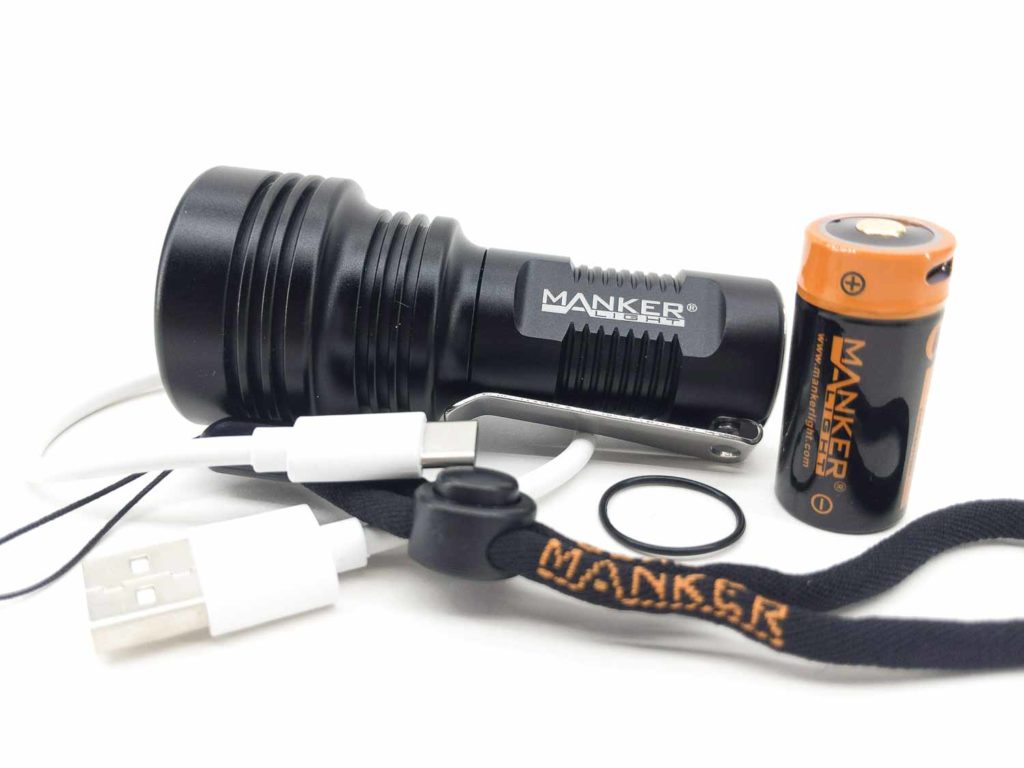
Handling of the light
The Manker is amazingly compact for being a thrower. This is in part due to the included battery tube being for the 18350 cell, but because it uses an amazing optic to focus the beam instead of a large reflector.
There isn’t any knurling to be found. Yet, the MC13 grips well because of several rings that are cut into the head and body of the flashlight. The stainless steel tail is perfectly flat and tailstands nicely. Speaking of tail, the lone switch is an e-switch centered in the tail of the flashlight. The switch button is also stainless and has a groove for the buyer to install a single tritium vial.
The pocket clip is very sturdy stainless steel and is nicely formed, allowing for deep carry. It is removable using a small Torx wrench (not included). The clip prevents rolling, but if you remove the clip, the flashlight will roll freely. The included wrist strap is pretty standard-issue, but sufficient.
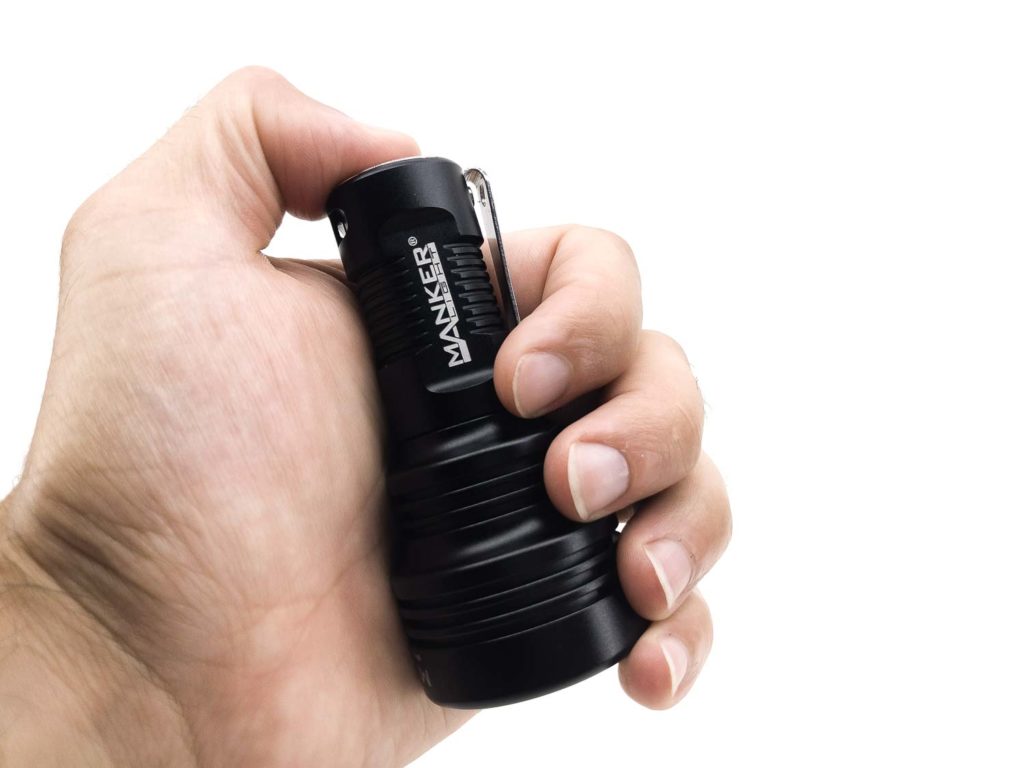
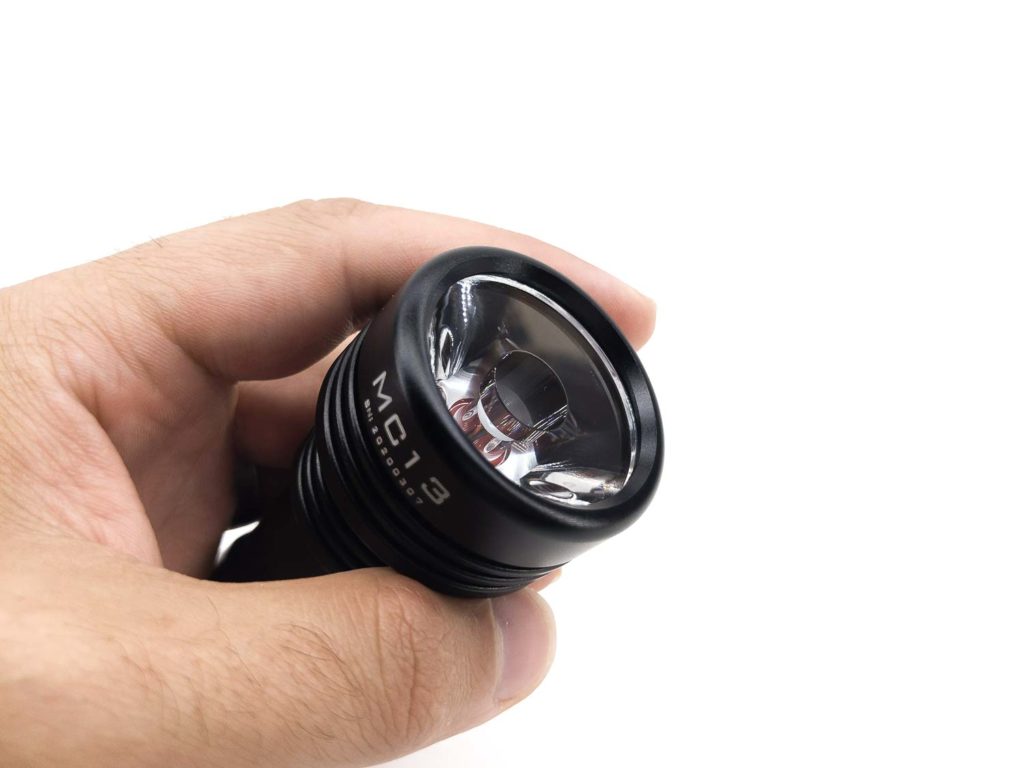
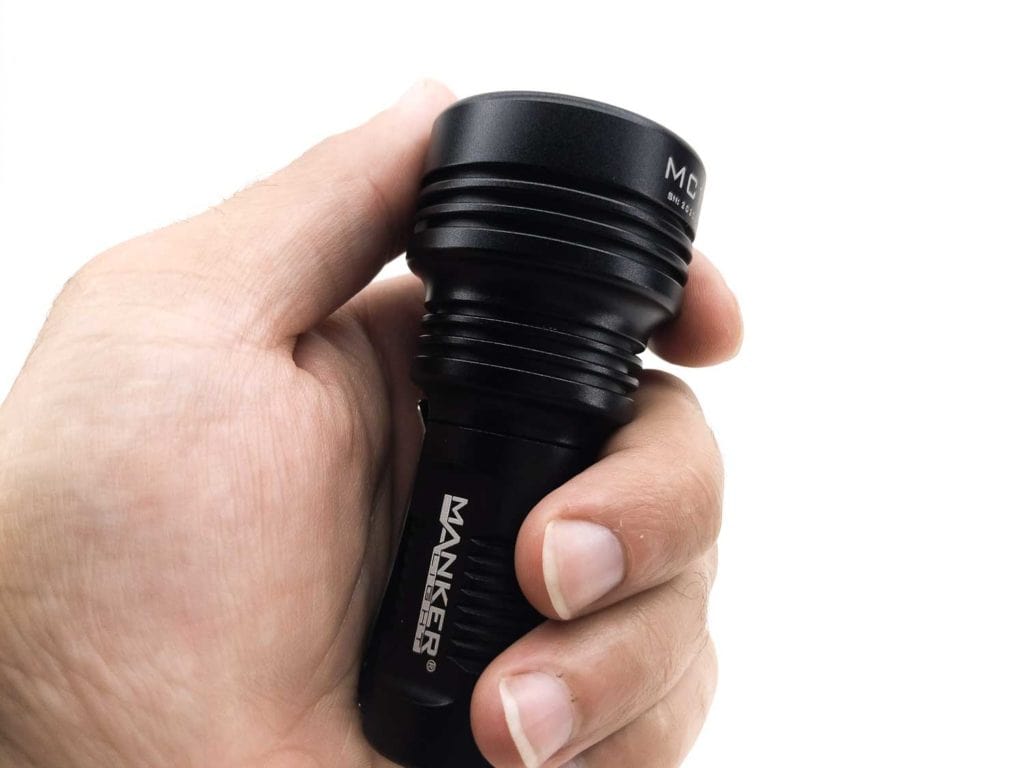
Build Quality, knurling, threads, and anodization
Save for the shiny stainless steel tail and pocket clip, the Manker MC13 is made of Type III hard-anodized aluminum. That includes the bezel, which is fairly rounded and smooth. I like a good stainless bezel as I feel like it adds to the aesthetic and helps with a bit of drop protection. I would have liked to have seen a stainless bezel on the MC13 to match the stainless tail. Overall, though, the anodizing is flawless. The laser engraving is very clear, including the tiny-print serial number on the bezel. The threads are square-cut and delightfully smooth.
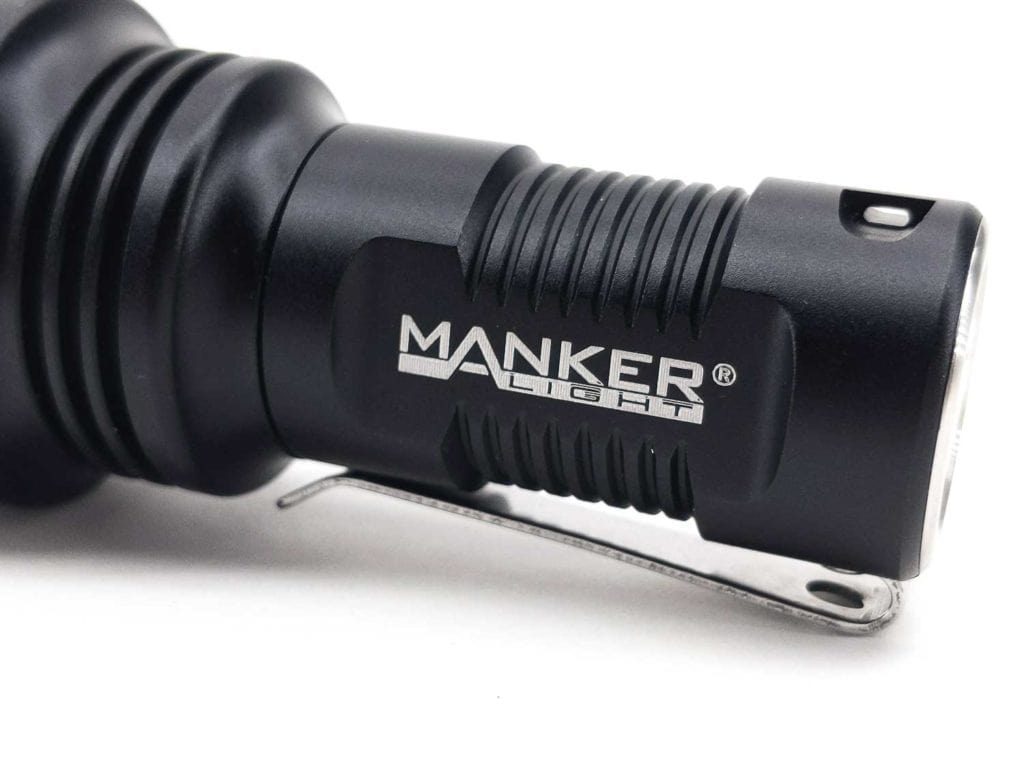
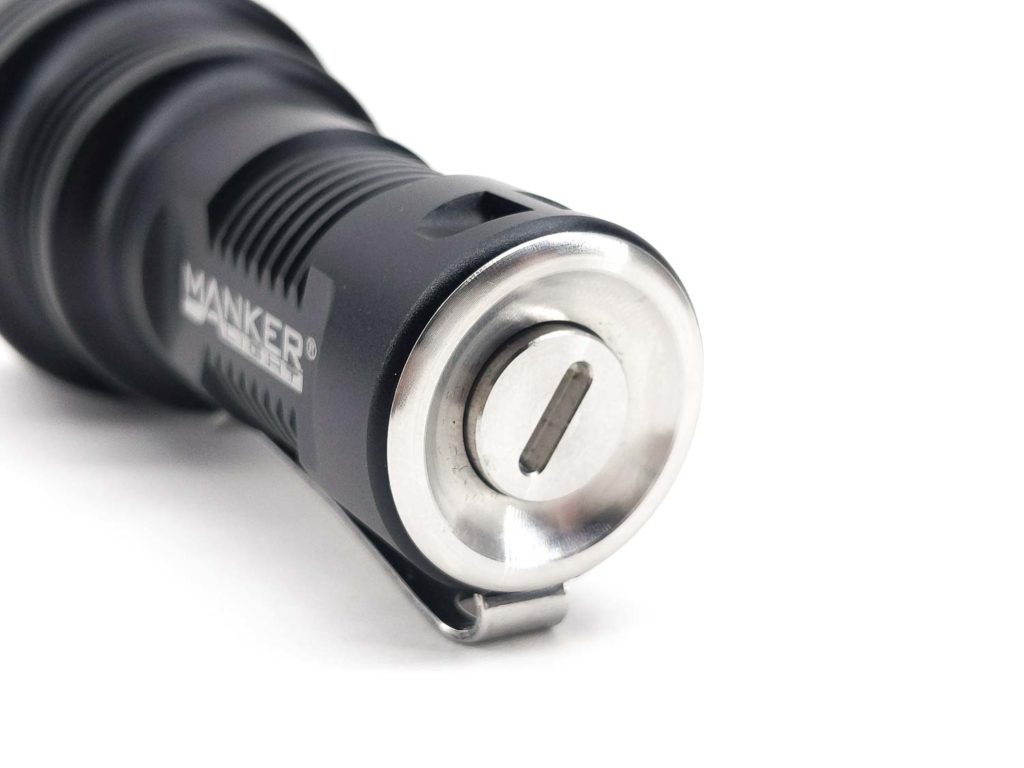
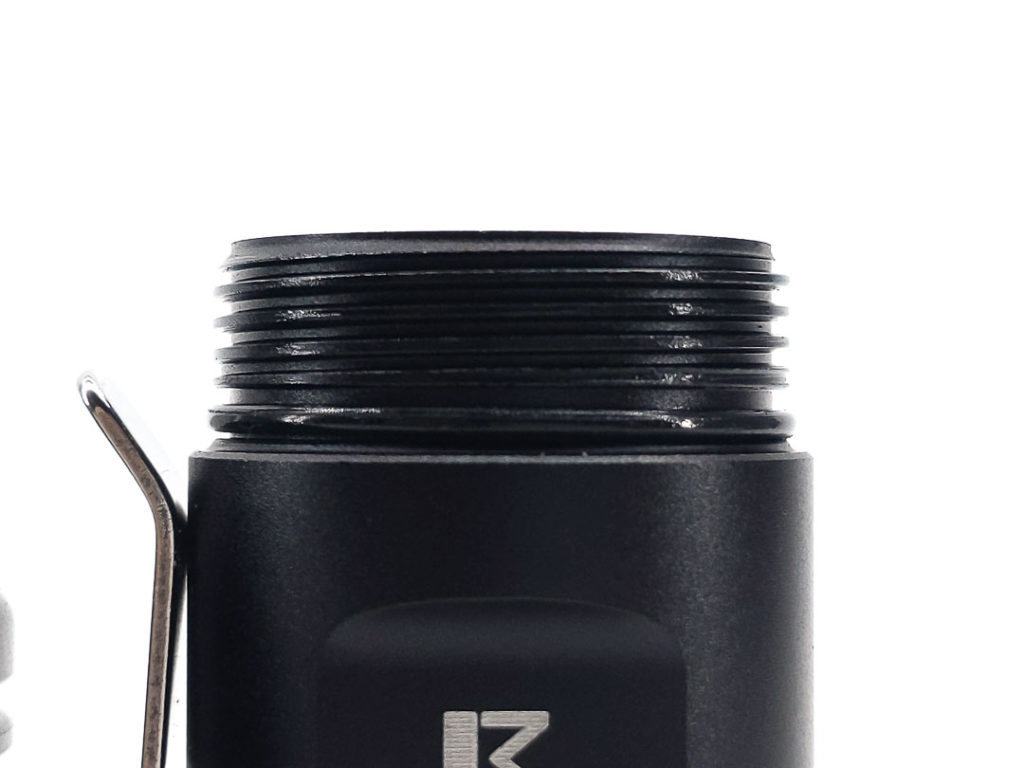
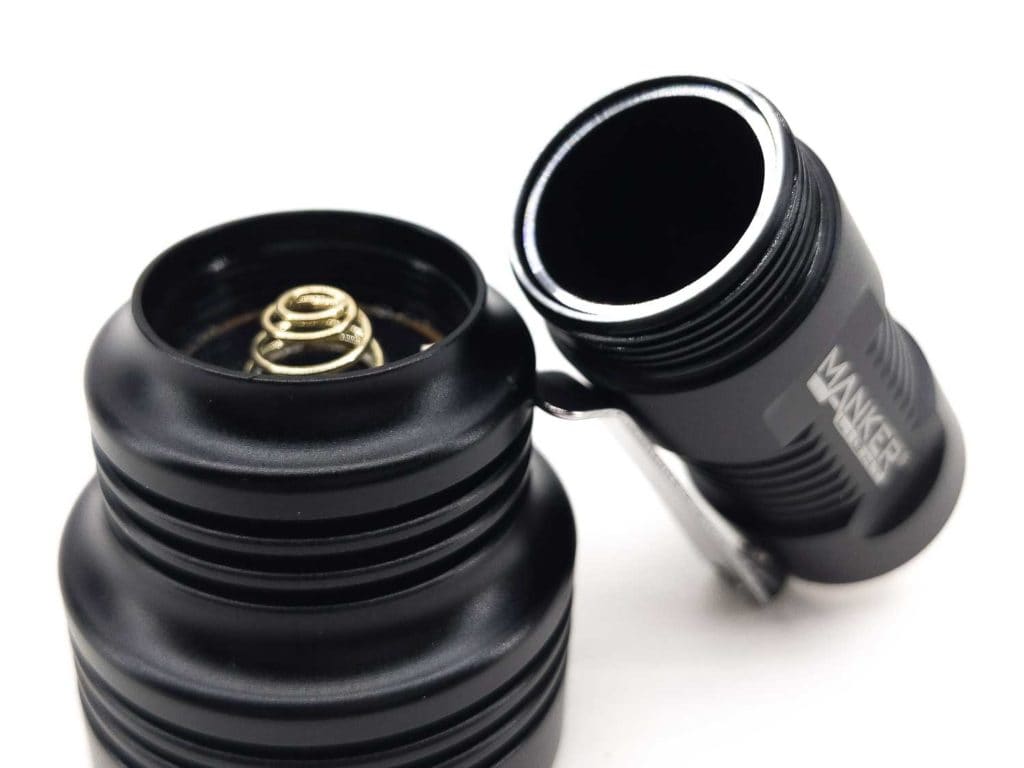
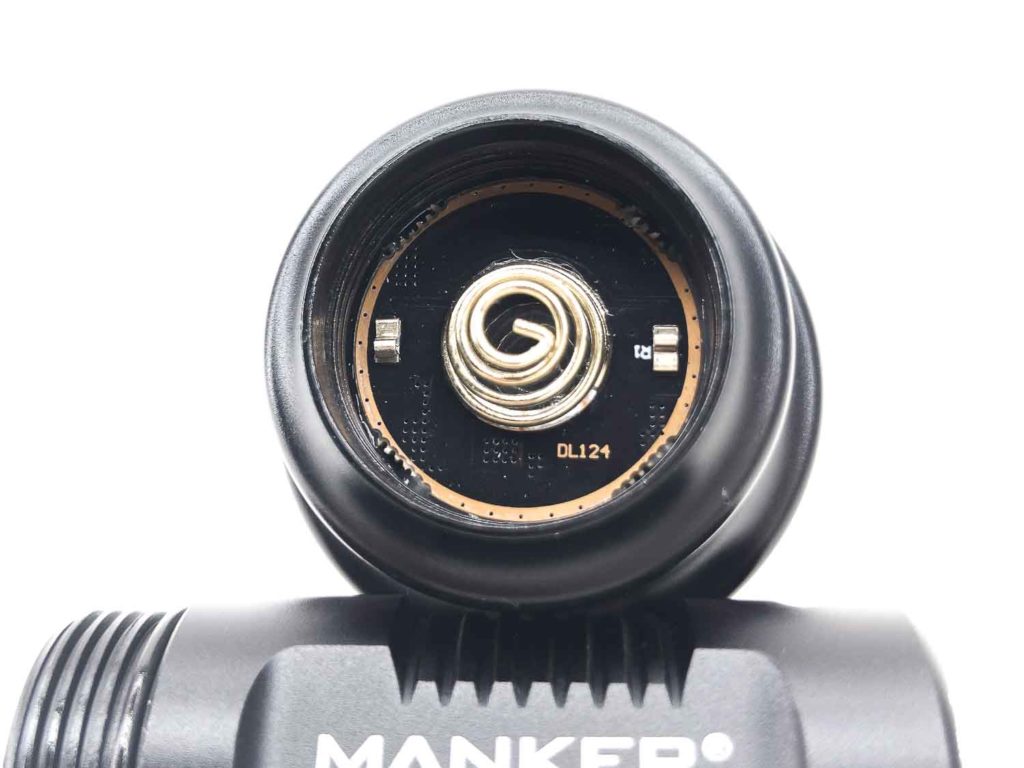
LEDs, Lens, Bezel, and Reflector
Ahh… the LED and lens. This is what makes the Manker MC13 stand out from the crowd! The MC13 makes use of the OSLON Boost HL, KW CULNM1.TG. For those, like me, that are challenged with keeping the OSLON LEDs straight, that’s the 1mm2 4.0×4.0 mm version. It’s essentially the “Flat White” (a 3.0×3.0 mm LED) with a larger footprint that allows for better heat dissipation and higher currents. CCT and CRI are not specified, as is common for these OSLON LEDs, but I would say the CCT is moderately cool, probably around 6000K.
Rather than using a reflector or convex lens to focus the beam, the MC13 employs a very unique looking optic TIR lens. The TIR is protected by an AR-coated glass lens. The optic makes a very narrow beam with almost no spill. Which, depending on what you’re interested in, is a nice advantage over reflectors (which usually have lots of spill) and convex lenses (which frequently have lots of rings).
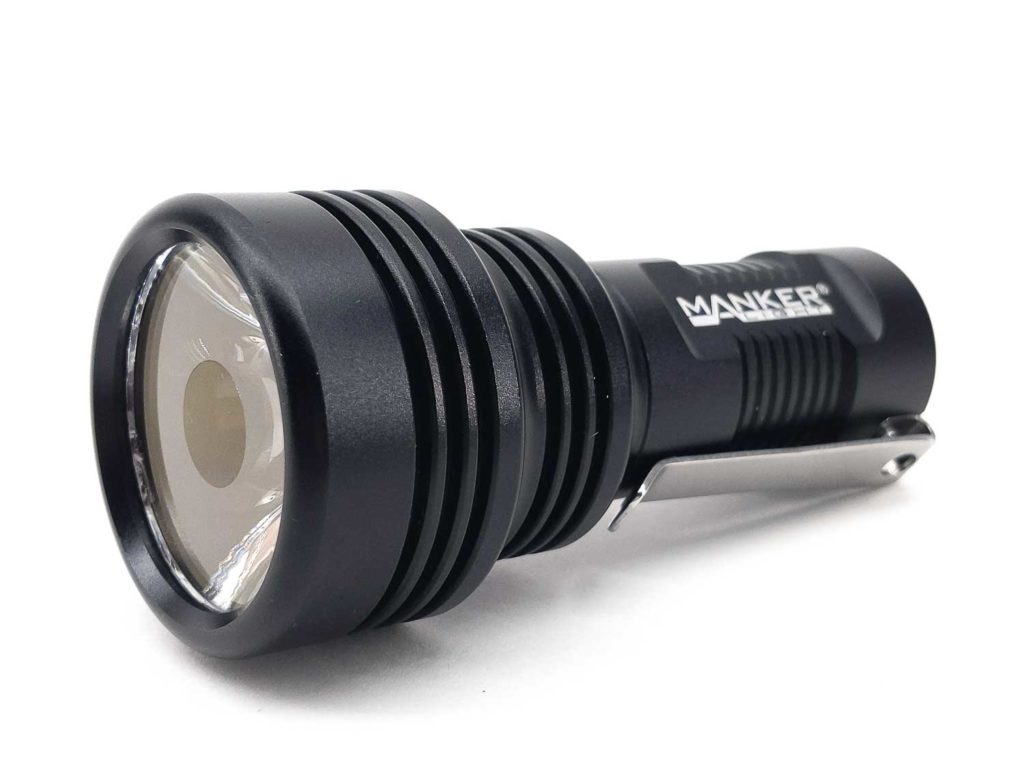
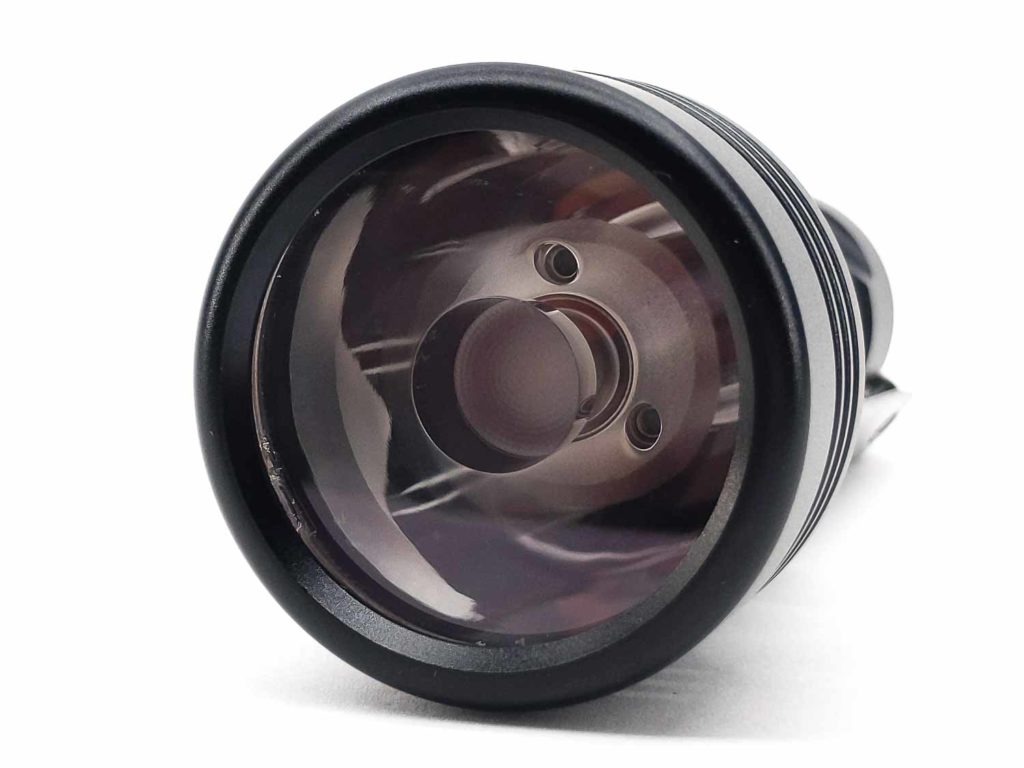
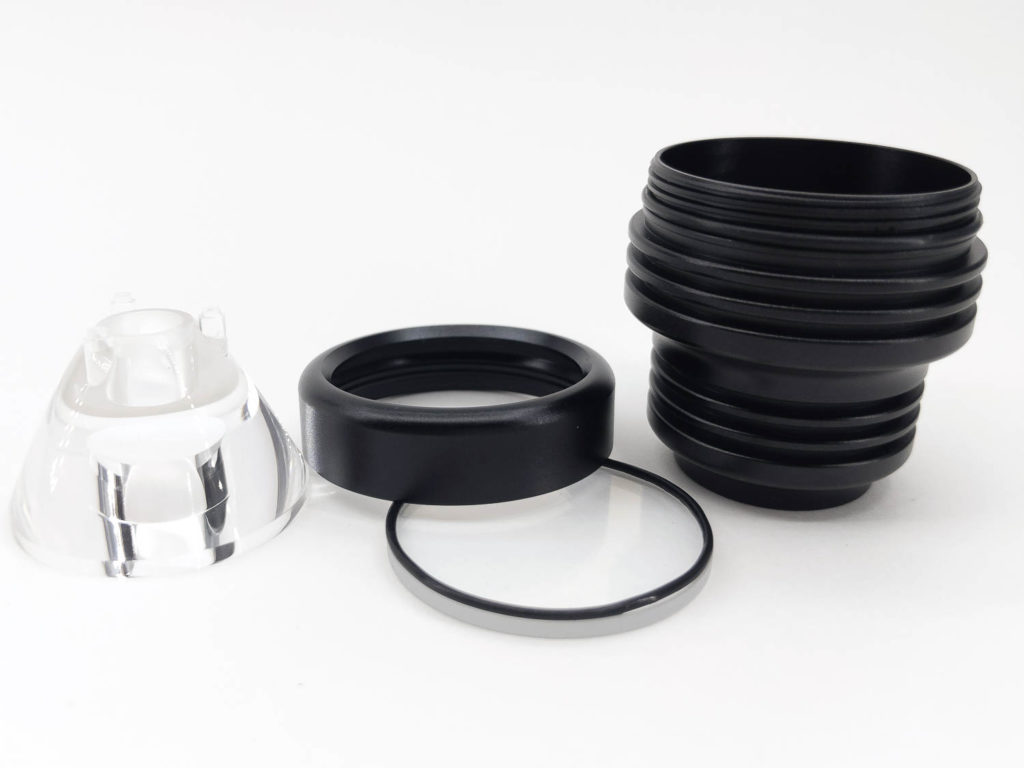
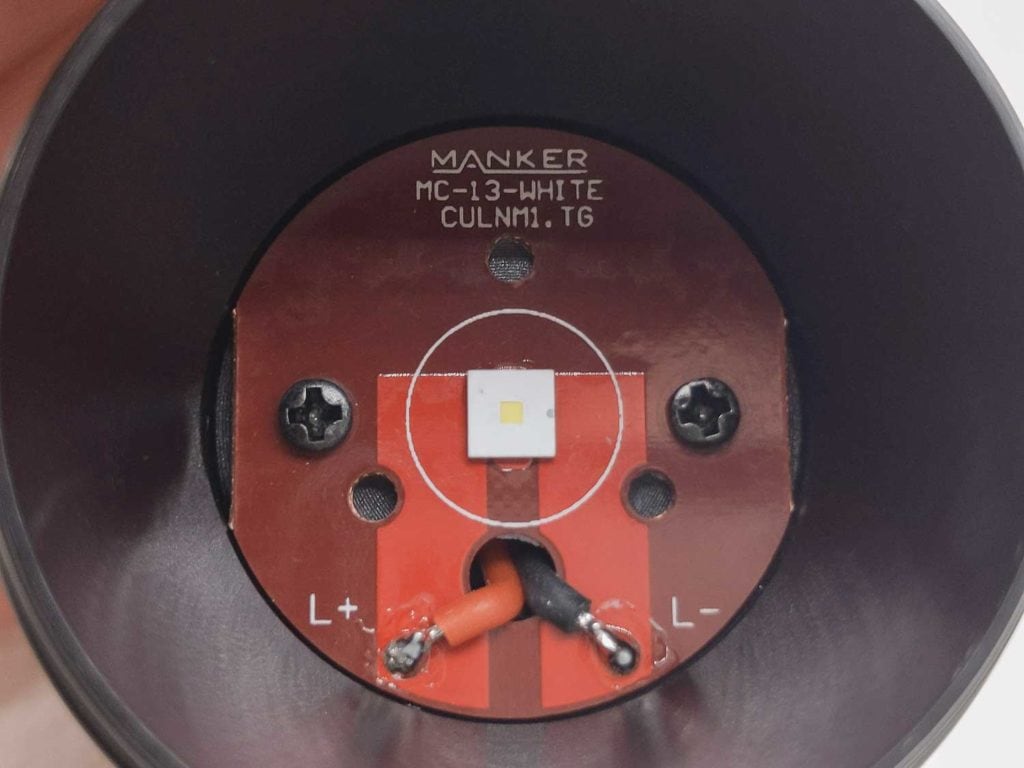
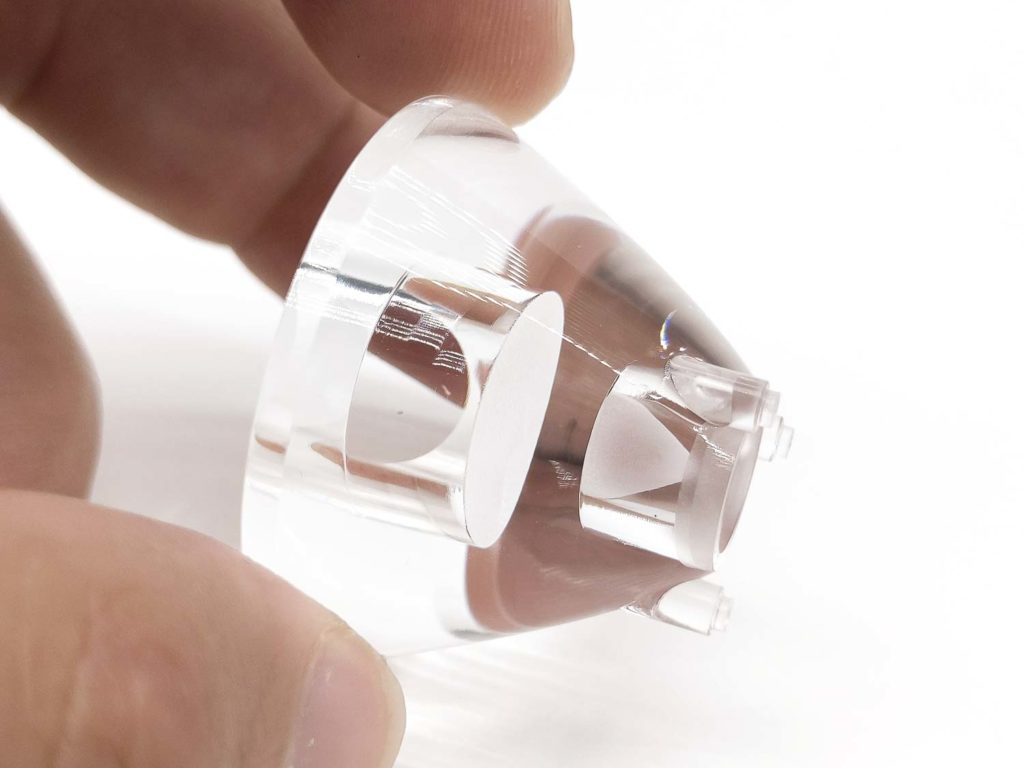
Dimensions:
- Length: 90.75 mm / 3.57 in
- Head diameter: 41.7 mm / 1.64 in
- Body diameter: 25.8 mm / 1.01 in
Weight:
- With battery: 136.7 g / 4.82 oz
- Without battery: 108.6 g / 3.83 o
Size comparisons
Small-midsize throwers from left to right: Sofirn C8, Manker MC13, Emisar D1S
Manker 13580 brothers: Manker MC13, Manker E14 III
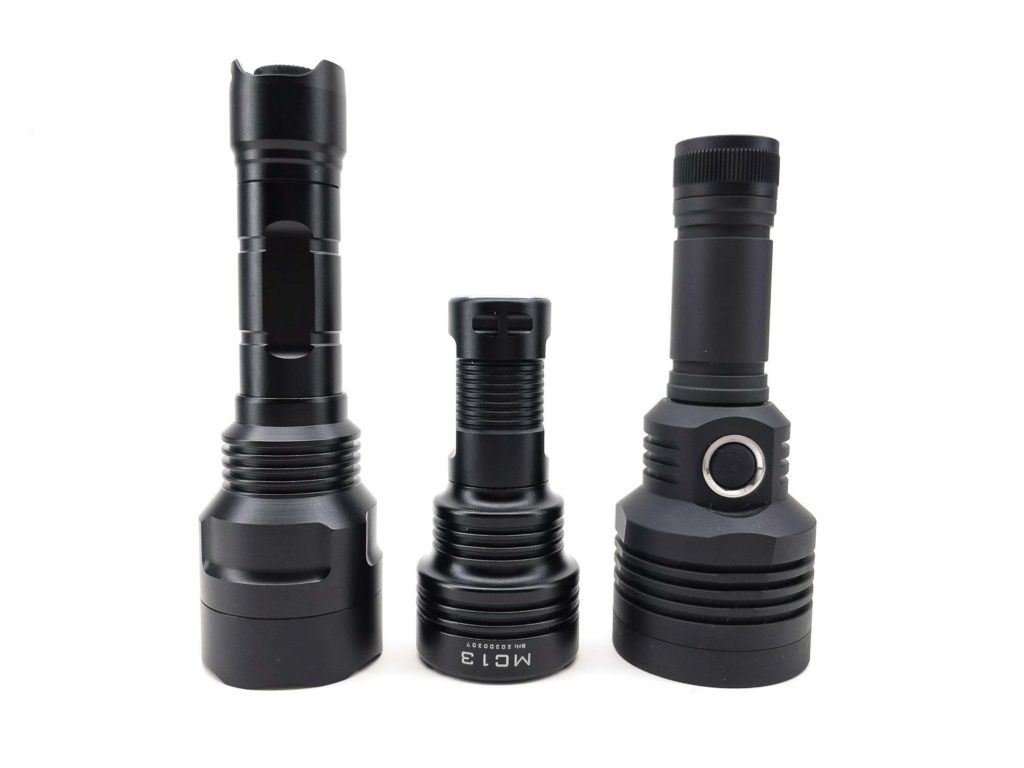
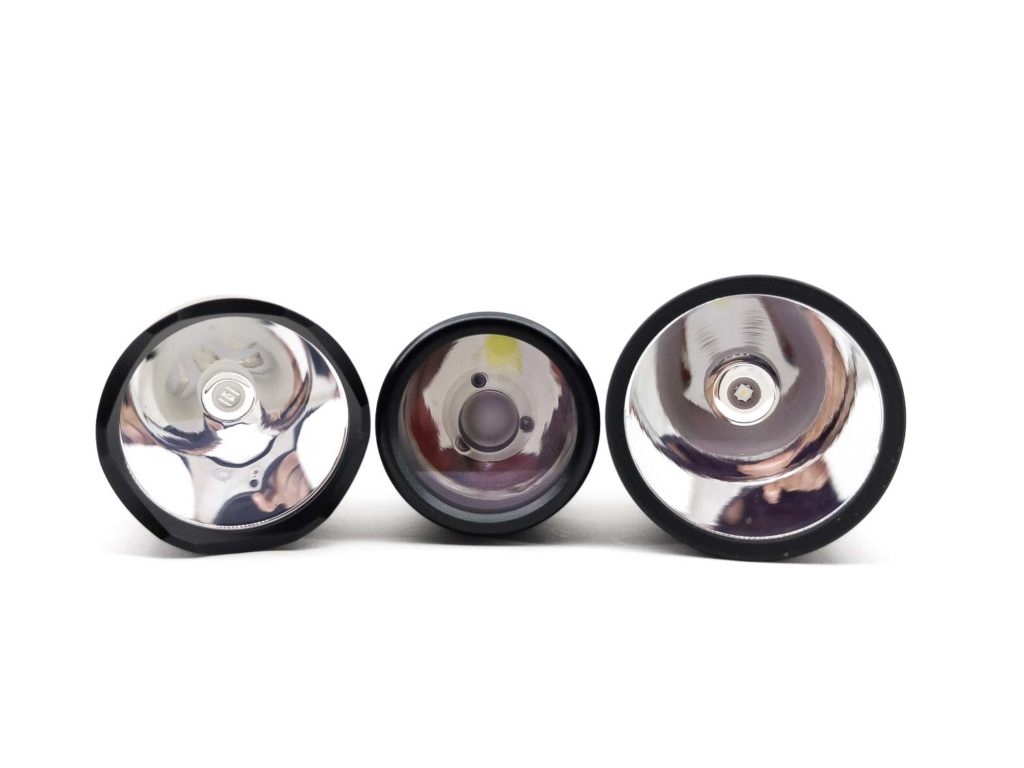
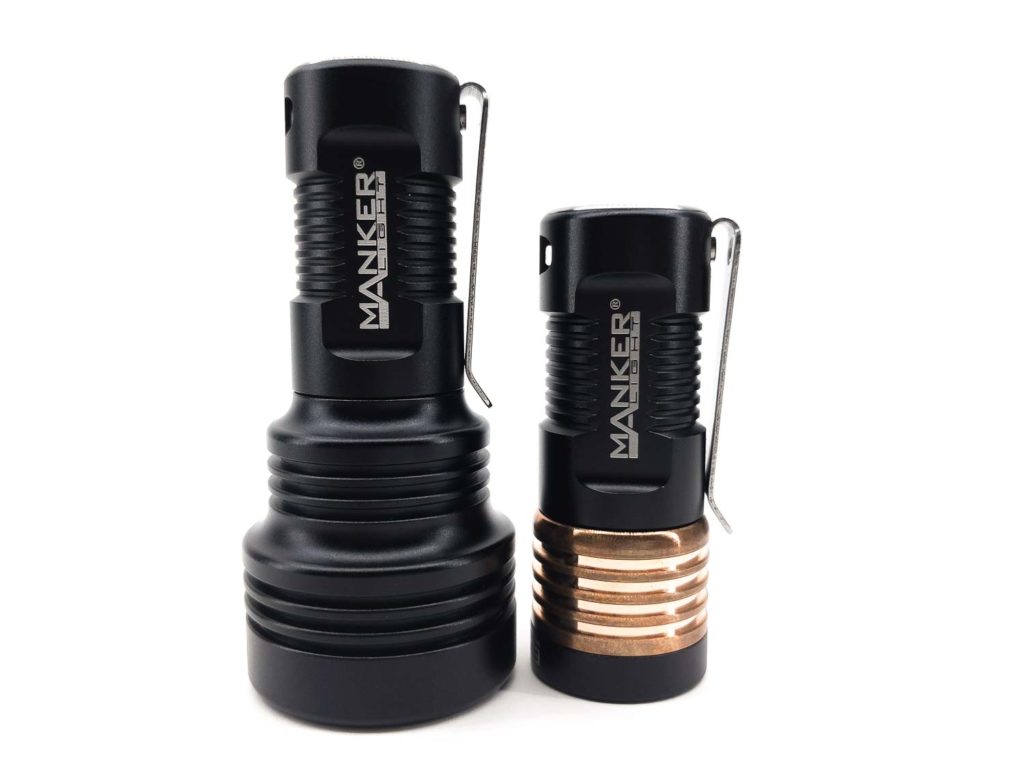
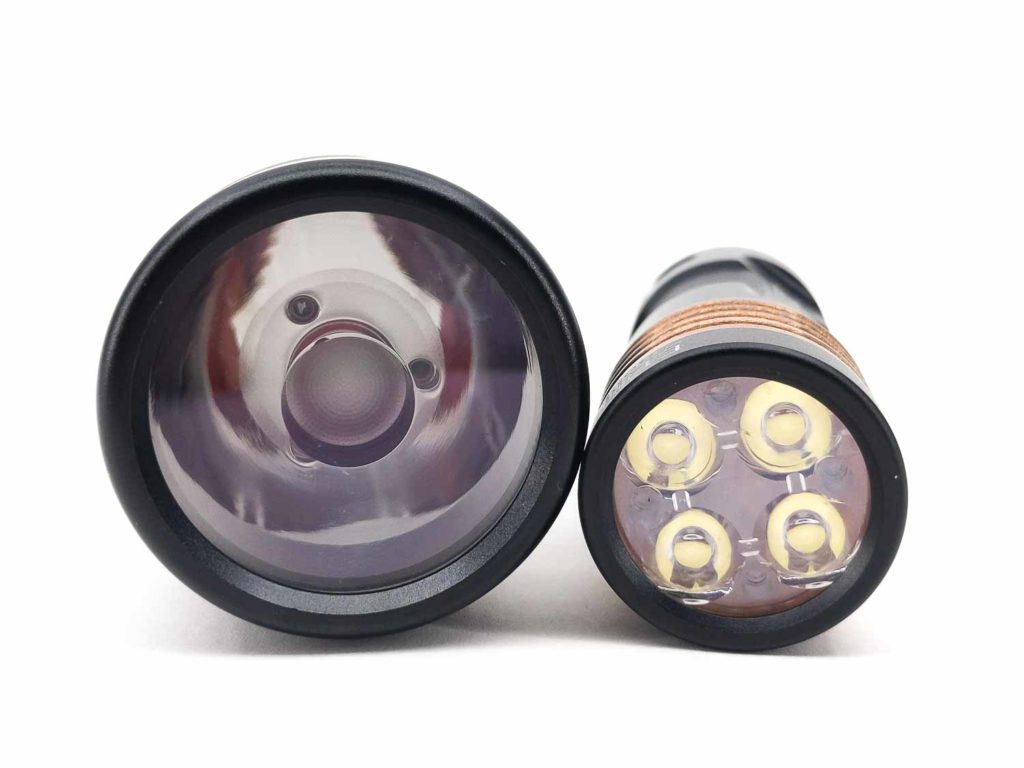
Driver & User Interface:
Historically speaking, Manker UI’s haven’t been my cup of tea. I’m thrilled to say that has changed with the MC13.
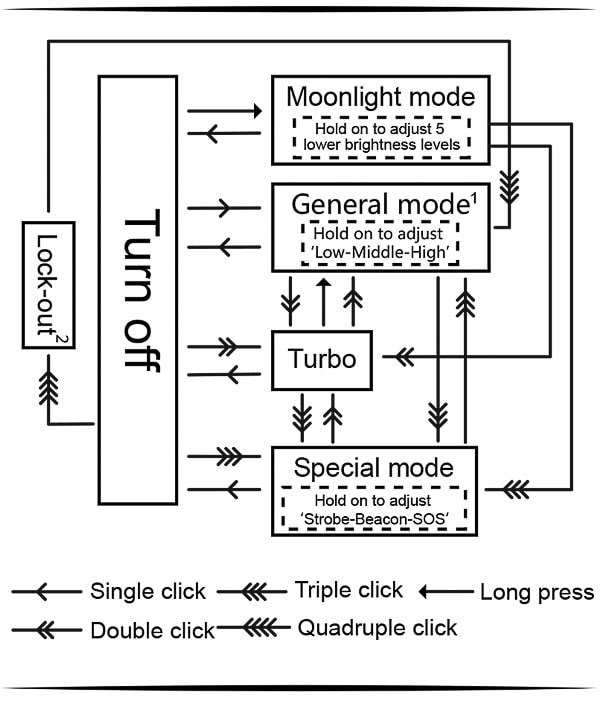
Modes:
- there are 5 moonlight levels, 3 general levels, turbo, and 3 blinky modes
From OFF:
- Long press: last used moonlight mode
- Single-click: last used general mode (low-med-high)
- Double click: turbo
- Triple-click: blinky modes (starting with Strobe)
- Quadruple click: lock-out
From ON, General modes:
- Press and Hold: cycle through low-med-high levels
- Single-click: off
- Double click: turbo
- Triple-click: blinky modes
From ON, Moonlight modes:
- Press and Hold: cycle through 5 moonlight levels
- Single-click: off
- Double click: turbo
- Triple-click: blinky modes
From ON, Turbo:
- Press and Hold: cycle through low-med-high levels
- Single-click: off
- Double click: low mode
- Triple-click: blinky modes
From ON, Blinky modes:
- Press and Hold: cycle through Strobe, Beacon, and SOS
- Single click: off
- Double click: turbo
- Triple click: low mode
Mode memory:
- Yes – both the moonlight modes and general modes have mode memory
Low voltage warning:
- Yes – according to the manual, when the battery falls below 3.2V, the MC13 goes into moonlight mode. And once it hits 2.9V it will turn off. In my testing, the light turned off at 3.0V on a non-protected battery (so it’s not relying on the battery’s protection circuit)
Strobe/blinkies
- Yes – the MC13 has Strobe, Beacon, and SOS that can be accessed by triple clicking
Lock-out mode:
- Yes – lock-out is enabled with a quadruple click and will be confirmed with 4 blinks. Quadruple click again to disable the lockout.
PWM
- PWM was not detected and Manker says there is no PWM
Additional info: all of that sounds like a lot, but it’s actually very intuitive to use. Single click on/off. Hold to rotate through modes. Double click for turbo, triple for blinkies, quadruple for lock-out. Well done, Manker!
Batteries and charging:
The Manker MC13 comes standard with a 18350 tube and a USB-C rechargeable, protected 18350 1100mAh “high drain” battery. The circuit has an indicator LED that glows green when it’s fully charged, even after you remove the charging cable. It’ll glow red when charging. A short USB-A to USB-C cable is included. It will not charge from a USB-PD (Power Delivery) charger.
The included battery is a bit long for a 18350, but that’s because it’s protected and has built-in charging. It fits comfortably in the MC13. Short, non-protected, flat-top 18350 batteries do fit (at least my black Shockli 1150mAh 18350 works fine).
Manker also sells an 18650 tube that will fit both the MC13 and the E14 III, but it was not included in the review package. When used with a good 18650 cell, that tube should provide greater runtimes while sacrificing some of the compactness of the MC13.
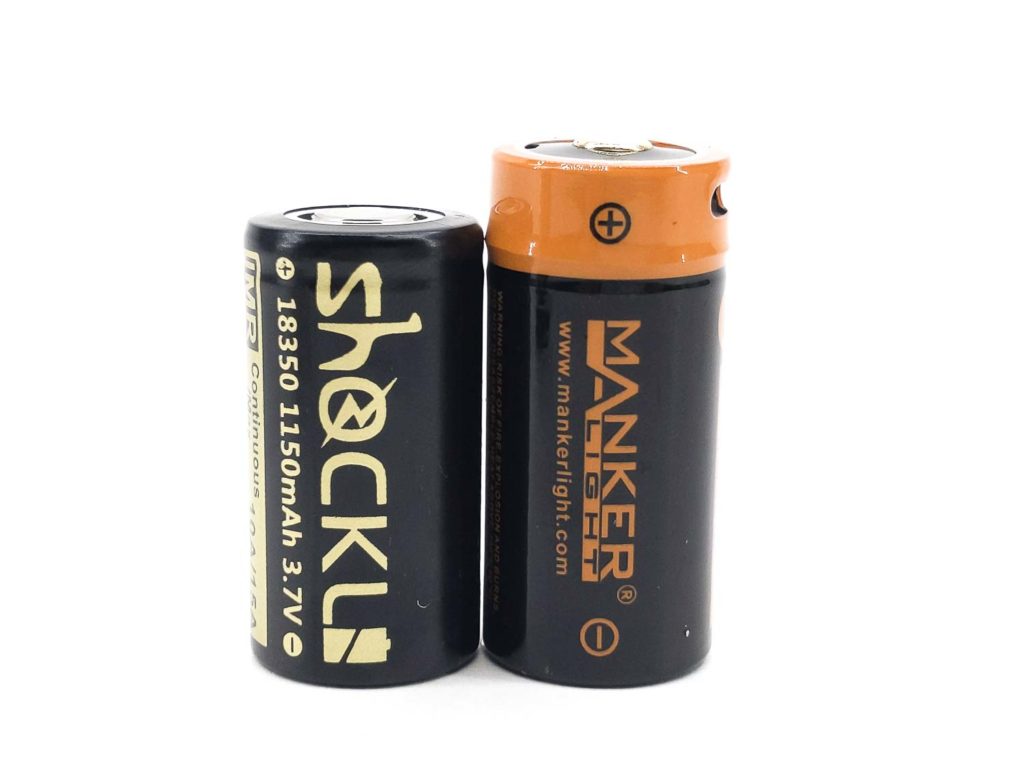

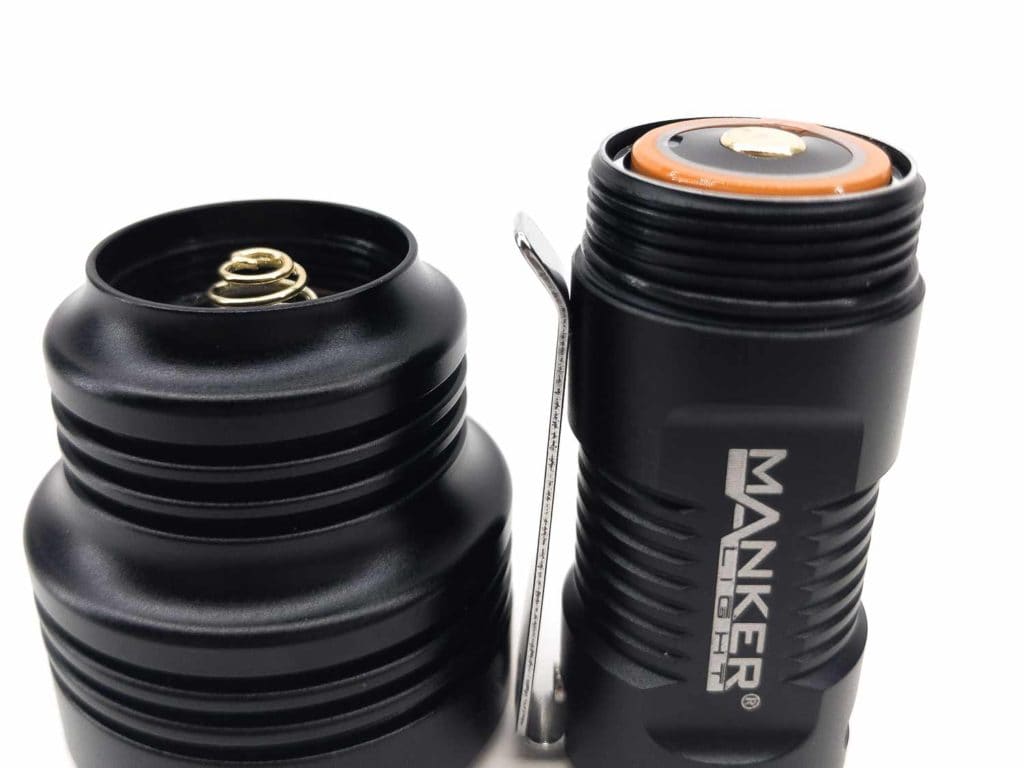

Performance:
For current measurements, a ANENG AN8008 multimeter and UNI-T UT210E clamp meter were used. Lux was measured by a UNI-T UT383 BT at 10 meters. Lumens were measured in a homemade lumen tube using a TSL2591 sensor, calibrated against several known lights including a Wuben TO50R. The temperature was monitored with a MLX90614 IR temperature sensor.
Amp measurements
- Standby: 91 uA
- Moonlight 1: 23 mA
- Moonlight 2: 23 mA
- Moonlight 3: 23 mA
- Moonlight 4: 24 mA
- Moonlight 5: 27 mA
- Low: 207 mA
- Med: 519 mA
- High: 1.4 A
- Turbo: 4.5 A
Runtime graphs

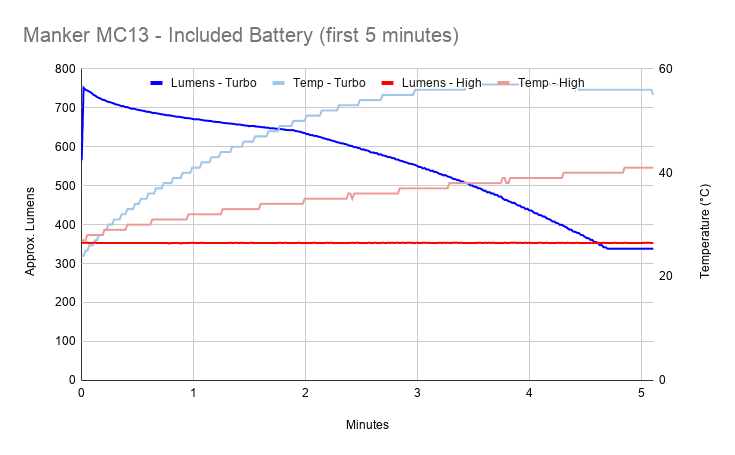
In my testing with the Manker MC13, I measured 819 lumens at turn-on. As the light heated up, it slowly ramped down to 368 lumens just before 5 minutes and stayed there until dropping off at 34.5 minutes. Turbo topped out at 57 °C.
High mode was a near-constant 388 lumens. It heated up much more slowly, but eventually got up to a toasty 64 °C until it dropped down to moonlight mode at 44 minutes.
Lumen measurements (for each mode)
I measure lumens in a homemade “lumen tube”. It’s good, but not perfect. I’d consider these numbers to be +/- 10% of actuality.
- Moonlight 1: [too low to measure]
- Moonlight 2: [too low to measure]
- Moonlight 3: 1 lm
- Moonlight 4: 2 lm
- Moonlight 5: 3 lm
- Low: 91 lm (spec: 120 lm)
- Med: 192 lm (spec: 240 lm)
- High: 388 lm (spec: 450 lm)
- Turbo: 819 @ 0 sec, 757 @ 30 sec (spec: 950 lm)
Side note: the LED itself may be making 950 lumens. Testing shows that the CULNM1.TG is capable of ~950 lumens at 4.5 amps. But that would be raw lumens being emitted from the LED. The MC13 will inevitably have out-the-front losses from the optic and glass that will reduce the observed lumens.
Throw numbers:
- 1298 lx @ 10 meters
- 129,800 cd (spec: 144,000 cd)
- Throw: 720 m / 787 yd (spec: 760 m)
Beamshots:
Outdoor beam shots are taken at 25m (82ft) using a Pixel 3 set to ISO 200 with ½ second exposure time
- Compared to: Sofirn SP33 v3, Brinyte PT28, Brinyte PT18 pro, C8 XPL
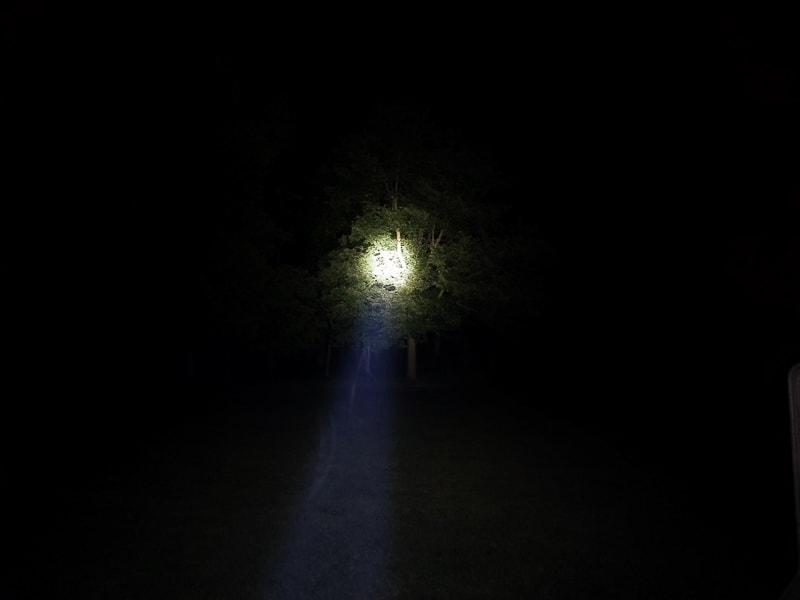



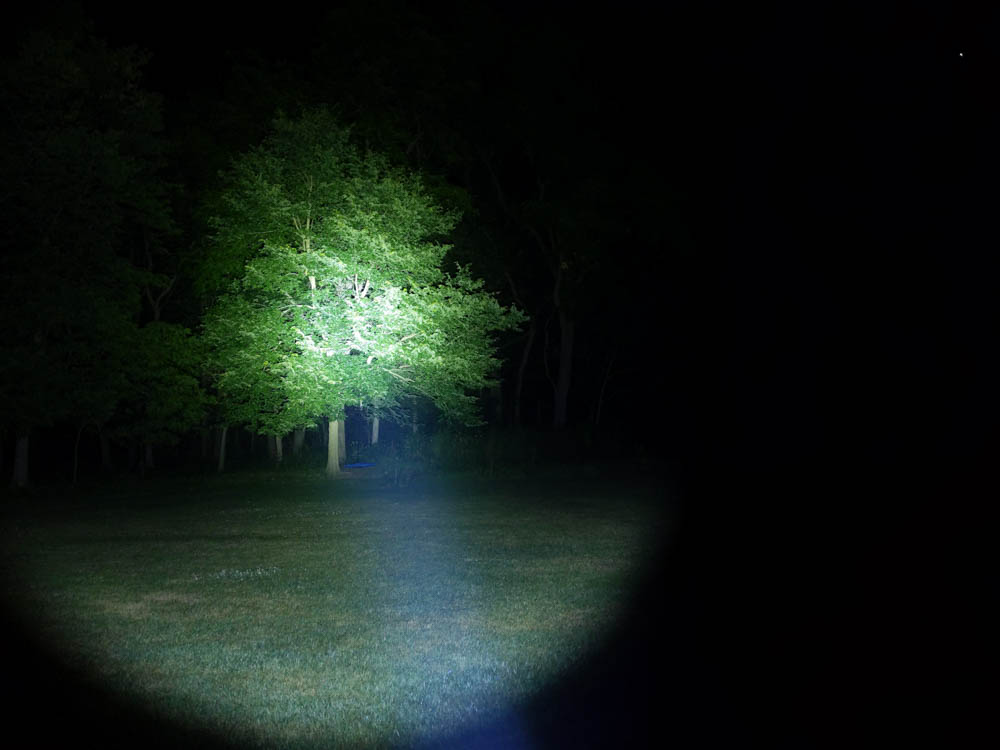
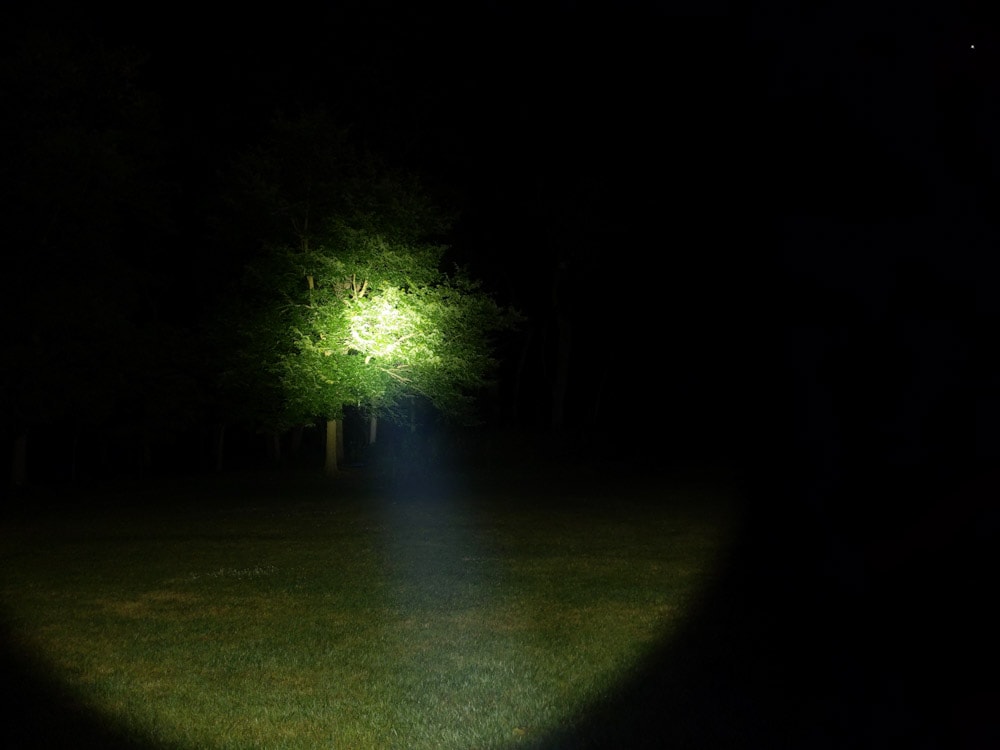
Disclaimer: This flashlight was sent to me for review at no cost, by Mankerlight. I have not been paid to review, nor have I been holding back on problems or defects.
Final Verdict
Pros:
- Very compact
- Great throw for its size
- Versatile and intuitive UI
- Efficient, no-PWM driver
- Good temperature regulation
- Full kit with a nice USB-rechargeable battery
- Deep carry clip
- 18650 tube option
Cons
- Lumen figures seem overstated
- Low could be lower (there’s a big jump from moonlight to “low”)

Rating: 4 stars ★★★★
Let’s get this out of the way… I’m a bit disappointed that the observed lumens don’t seem to line up with their factory specs. Unfortunately, elevated specs are way too common in the flashlight world. And let’s be honest, you’re not buying the MC13 for lumens. There are many more flashlights with much higher lumen ratings. You’re buying the MC13 because it’s a compact thrower – and it nails that. The driver is really well regulated. And Manker has finally delivered a great UI. I think Manker has hit a homerun with the MC13!
Manker MC13 for sale
Discontinued: Check out our review of its successor. The Manker MC13 II
Or check out the following guide:
1lumen selects and reviews products personally. We may earn affiliate commissions through our links, which help support our testing.
